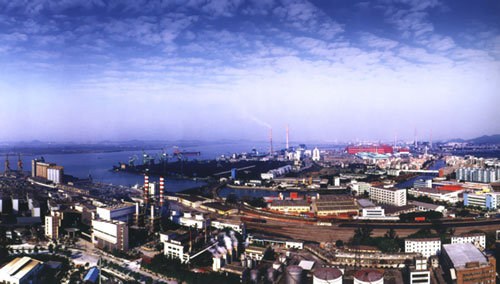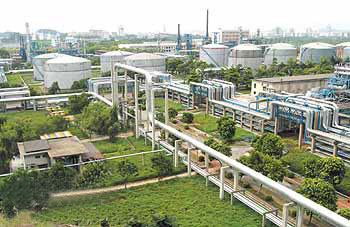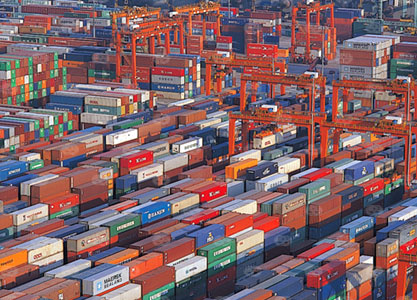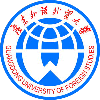Život v Guangzhou
Guangzhou je známé rodné město zámořských Číňanů. Má největší populaci zámořských Číňanů. Tito zámořští Číňané dělají pro Guangzhou mnoho dobrého: otevírají mezinárodní trhy, propojují Guangzhou a zbytek světa a zakládají v Guangzhou mnoho škol, nemocnic, jeslí, školek a domovů důchodců. Guangzhou je kulturní centrum. V Guangdongu je také několik univerzit, Zhongshan University, South China University of Technology, tak dále. Město je známé pro své umění a řemesla, jmenovitě Guangdongské vyšívání, řezbářství ze slonoviny a keramiku.
S 2800 letou historií je Guangzhou jedním z 24 nejznámějších historických kulturních měst a slavnou turistickou destinací. Ve starověku bylo Guangzhou hlavním městem tří čínských dynastií: Nan Yue (South Yue), Nan Han (South Han) a Nanming (South Ming). V Kantonu je mnoho historických památek: Západní muzeum královské hrobky Han Nanyue, věž Zhenhai a pamětní síň Sun Yat-sen atd. Guangzhou se stalo součástí Číny ve 3. století. Již v roce 200 př. n. l., za vlády králů Nanyue, to bylo kvetoucí město. Během dynastie Qin (221-206 př.nl) císař dobyl pobřežní oblasti u Perlové řeky. Trvalo dalších sto let, než Číňané Han ze severní Číny vytlačili původní obyvatele. Během dynastie Tang (618-907) byli námořníci a obchodníci z Persie a Malacca (hinduistické a arabské) běžnými návštěvníky v Guangzhou. Then the city became the first Chinese port regularly visited by European traders. In 1511, Portugal secured a trade monopoly, but it was broken by the British in the late 17th century; in the 18th century, the French and Dutch were also admitted. Annoyed by the trade imbalance, British gained the upper hand over the Qing Dynasty (1644-1911) by dumping opium on Guangzhou. The Chinese generated quite a habit for the stuff and by the 19th century, trade was heavily weighted against the Chinese. The British were feeding the Chinese addiction with cheap Indian opium and ferrying away silk, porcelain and tea. In 1839, Chinese forces seized and destroyed 20,000 chests of the drug. The British didn't take this very well and soon the First Opium War was fought and won by Western forces. Trading, however, was restricted until the Treaty of Nanjing in 1842, which ceded Hong Kong Island to the British. It was during these tumultuous times that thousands of Cantonese left home to seek their fortunes in the US, Canada, Southeast Asia, Australian and even South Africa. Following a disturbance, the French and British forces occupied Guangzhou in 1856. Later the island of Shameen (Shamian) was ceded to them for business and residential purposes, and this reclaimed sandbank with its broad avenues, gardens, and fine buildings was known for its beauty; it was restored to China in 1946. Guangzhou was the seed of the revolutionary movement under Dr. Sun Yat-Sen in December 1911, who was recommended as a temporary President of China. Before Dr. Sun Yat -Sen died, he considered Chiang Kai-Shek would make a great contribution for the party. In 1927, Guangzhou was briefly one of the earliest Communist communes in China. Chiang Kai Shek became the leader of China in 1928 and led the Nationalist Armies northward to establish a government in Nanjing. The fall of Guangzhou to the Communist armies in late October 1949, signaled the Communist takeover of all China. Under the Communist government, Guangzhou was developed as an industrial center and a modern port, with a great trade to and from Hong Kong. There are a lot of interesting legends concerning Guangzhou's past. Monuments everywhere tells of the city's democratic and revolutionary past. The monument to the Anti British struggle at Sanyuanli is in remembrance of the 1841 uprising against a British invading force. The Huanghuagang Park keeps alive the spirit of the 72 martyrs killed in the 1911 uprising against the Manchu Dynasty. The National Peasant Movement Institute is the former cadre-training school founded and run by Mao Zedong and Zhou Enlai in 1925-1926. The Guangzhou Memorial Garden is in memory of those who lost their lives during the Communist Uprising in 1927.
Guangzhou stands at the confluence of the East River, West River and North River, with its land sloping from north-east to south-west, and an alluvial plain in the south and south-west parts. Part of the Pearl River Delta, it adjoins the South China Sea, and is crisscross with rivers and streams. Covering an area of 7434.4 square kilometers (2870 square miles), Guangzhou is home to more than 11 million people, including a 3.7 million transitory population. With the opening of China to the outside world, a large number of people from other regions of China swarmed into Guangzhou, one of the first 'open' cities in China. This has accelerated its economic development. It has south subtropical marine climate with an annual average temperature of 21.8 degree Celsius, rainfall of 1694 millimeters, and a frost-free period of 345 days. It's abundant in agricultural and aquatic resources. Its mineral resources include coal, salt, copper, iron, zinc, lead and limestone.
Guangzhou je ekonomickým centrem delty Perlové řeky, kde se nacházejí přední čínské obchodní a výrobní regiony. Guangzhou je jedním z nejdůležitějších center zahraničního obchodu v jižní Číně. Čínský veletrh exportních komodit, nazývaný také Kantonský veletrh, se koná dvakrát ročně každé jaro a podzim. Veletrh, který byl slavnostně otevřen na jaře 1957, je pro město významnou událostí. Průmysl Guangzhou zahrnuje strojírenství, stavbu lodí, textil, rafinerii cukru, domácí elektrické spotřebiče, počítače, petrochemický průmysl a výrobky lehkého průmyslu pro každodenní použití, pryžové výrobky a oděvy. Zóna hospodářského a technologického rozvoje Guangzhou, která se nachází v Huangpu, již získala podobu. Guangzhou má pokročilé zemědělství, oplývající rýží, cukrovou třtinou, ovocem, sladkovodními rybami a olejnatými plodinami. Vyvíjejí se snahy vybudovat z Guangzhou mezinárodní metropoli fungující především jako největší finanční, high-tech a průmyslové, ale i komunikační a dopravní centrum v jižní Číně.
V Guangzhou je pohodlné a oblíbené používat motocykl jako dopravní prostředek, což je místní zvláštnost. Provincie Guangdong dosáhla v posledních letech určitého pokroku v omezování znečištění ovzduší, vody a hluku, protože problémy se znečištěním jsou v současnosti stále poměrně vážné. Provincie zavedla řadu programů ke zlepšení své obecné situace v oblasti životního prostředí, ale stále zbývá velký kus cesty, než budou škody způsobené roky zanedbávání zvráceny. |

 Guangzhou je hlavním městem provincie Guangdong. Toto město má přezdívky Wuyangcheng (město pěti beranů), Yangcheng (město beranů), Huacheng (město květin) nebo Suicheng (město pšenice). Strom kapok, vysoký, původní strom, který ve svých nádherných červených květech produkuje vlněné vlákno, je městský strom Guangzhou. Guangzhou je nejlidnatější město v provincii a páté nejlidnatější v Číně. Je to jedno z hlavních čínských průmyslových, politických, ekonomických, vědeckých, vzdělávacích a kulturních center.
Guangzhou je hlavním městem provincie Guangdong. Toto město má přezdívky Wuyangcheng (město pěti beranů), Yangcheng (město beranů), Huacheng (město květin) nebo Suicheng (město pšenice). Strom kapok, vysoký, původní strom, který ve svých nádherných červených květech produkuje vlněné vlákno, je městský strom Guangzhou. Guangzhou je nejlidnatější město v provincii a páté nejlidnatější v Číně. Je to jedno z hlavních čínských průmyslových, politických, ekonomických, vědeckých, vzdělávacích a kulturních center. Guangzhou is located at 112°57'E to 114°3'E and 22°26'N to 23°56'N,
in the middle south of Guangdong Province, north of the Pearl
River Delta. It lies close to the South China Sea, Hong Kong,
and Macau. Zhujiang (The Pearl River), the third largest river
of China, runs through Guangzhou and is navigable to the South
China Sea. Situated in such an excellent geographical region,
Guangzhou is called China's South Gate.
Guangzhou is located at 112°57'E to 114°3'E and 22°26'N to 23°56'N,
in the middle south of Guangdong Province, north of the Pearl
River Delta. It lies close to the South China Sea, Hong Kong,
and Macau. Zhujiang (The Pearl River), the third largest river
of China, runs through Guangzhou and is navigable to the South
China Sea. Situated in such an excellent geographical region,
Guangzhou is called China's South Gate.


 Guangzhou je největším národním a zahraničním městem jižní Číny s prosperujícím obchodem a také hlavním čínským centrem zahraničního obchodu. Je to také jedno z nejhistoričtějších a nejkulturnějších měst Číny. Město s dlouhými léty a bez zim je po celý rok vždy zelené a kvetoucí květinami, proto se mu říká „Květinové město“. Jak je uvedeno výše, vynakládá se úsilí na vybudování Guangzhou v mezinárodní metropoli fungující především jako největší finanční, high-tech a lehký průmysl, stejně jako komunikační a dopravní centrum v jižní Číně.
Guangzhou je největším národním a zahraničním městem jižní Číny s prosperujícím obchodem a také hlavním čínským centrem zahraničního obchodu. Je to také jedno z nejhistoričtějších a nejkulturnějších měst Číny. Město s dlouhými léty a bez zim je po celý rok vždy zelené a kvetoucí květinami, proto se mu říká „Květinové město“. Jak je uvedeno výše, vynakládá se úsilí na vybudování Guangzhou v mezinárodní metropoli fungující především jako největší finanční, high-tech a lehký průmysl, stejně jako komunikační a dopravní centrum v jižní Číně.